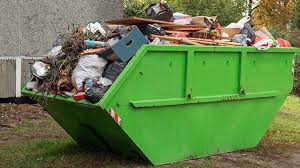
When embarking on a cleaning, renovation, or landscaping project, skip bin hire can be an invaluable solution for managing waste efficiently.
However, one common challenge many face is selecting the right bin size. Choosing a bin that’s too small can lead to overflows, additional expenses, or logistical headaches.
On the other hand, hiring one that’s unnecessarily large can result in wasted money and space.
This guide offers practical tips to help you pick the perfect skip bin size for your needs, making the process simple and stress-free.
1. Assess the Type of Waste You’ll Generate
The type of waste you plan to dispose of plays a crucial role in determining the bin size.
Different projects produce varying waste volumes, and some materials may require specific handling:
- General Household Waste: Ideal for spring cleaning or decluttering, household waste typically includes old furniture, appliances, clothing, and general rubbish.
- Green Waste: Projects like garden clean-ups or landscaping often generate leaves, branches, grass clippings, and soil. A medium-sized skip bin is often sufficient.
- Renovation or Construction Debris: Renovation projects can produce heavy materials such as concrete, bricks, and timber, requiring a larger bin with adequate weight limits.
- Mixed Waste: If your project involves a mix of materials, choose a skip bin that accommodates various waste types.
Knowing the type of waste ensures you avoid hiring a bin that doesn’t meet local regulations or your needs.
2. Estimate the Volume of Waste
Skip bins come in a range of sizes, typically measured in cubic meters, starting from small 2m³ bins up to massive 10m³ or more. To estimate the volume of waste you’ll generate:
- Visualize Your Waste: Think about how many wheelie bins or trailer loads your waste would fill. For example, a 2m³ skip bin is equivalent to about eight wheelie bins.
- Consider Bulky Items: Larger items like furniture or appliances can quickly fill up a small bin, so factor them into your calculations.
- Err on the Side of Caution: If you’re unsure, it’s better to opt for a slightly larger size. Overestimating saves you from hiring a second bin, which can be more costly.
3. Understand the Bin Sizes Available
Familiarize yourself with the skip bin sizes offered by your local provider. While sizes can vary slightly between companies, the following options are commonly available:
- Mini Skip Bins (2m³ to 4m³): Best for small-scale projects such as household clean-ups, garden waste, or minor renovations.
- Medium Skip Bins (6m³ to 8m³): Suitable for larger home renovations, landscaping, or moderate construction work.
- Large Skip Bins (10m³ and above): Designed for commercial or large-scale construction projects that generate significant amounts of waste.
Having a clear understanding of the sizes available helps you match your needs with the right bin.
4. Factor in Your Project Duration
The duration of your project can influence your decision. For shorter projects, smaller bins might suffice, as waste can be removed more frequently.
However, for longer projects, opting for a larger bin may save time and effort by minimizing pickups.
Confirm the hire period with your provider to ensure you have the bin for as long as needed.
5. Consider Space Availability for the Bin
Where the skip bin will be placed is another important consideration. Before finalizing your choice:
- Measure the Space: Ensure the location can accommodate the bin size you’re considering, including room for delivery and pickup.
- Check Access Requirements: Make sure the area is easily accessible for the skip truck. Narrow driveways or limited street access may restrict the size of the bin that can be delivered.
- Local Permits: If you plan to place the bin on public property, such as a street or footpath, check if you need a permit from your local council.
By assessing the available space, you can avoid complications and ensure smooth delivery and placement.
6. Ask for Expert Advice
If you’re unsure about the right bin size, don’t hesitate to consult your skip bin provider.
They have experience helping customers select the best option based on project details and can offer valuable insights.
Provide them with as much information as possible about your waste type, volume, and project scope for a tailored recommendation.
7. Avoid Overfilling Your Skip Bin
Once you’ve hired a skip bin, it’s crucial to use it responsibly. Overfilling the bin can result in safety hazards, fines, or refusal of pickup.
Skip bins have a clearly marked fill line, which should not be exceeded.
If you anticipate exceeding the capacity, contact your provider to discuss upgrading to a larger bin or arranging an additional one.
8. Plan Ahead to Save Money
Hiring the right skip bin size from the start can save you money in the long run.
Avoiding underestimation or overestimation reduces the need for multiple hires or oversized bins.
Some providers may also offer discounts for booking in advance or for longer hire periods, so inquire about cost-saving options.
9. Think About Sustainability
Many skip bin providers prioritize eco-friendly waste disposal practices.
Ask your provider about their recycling processes and choose a company committed to reducing landfill waste.
This not only benefits the environment but can also save you money if recyclable materials are processed separately.
Final Thoughts
Choosing the right skip bin size is essential for efficient and hassle-free waste management.
By assessing your waste type, estimating its volume, and considering factors such as space and project duration, you can ensure your skip bin hire experience is smooth and cost-effective.
When in doubt, consult your provider for expert advice and opt for a slightly larger bin to avoid unexpected challenges.
With the right planning, skip bin hire can be a simple and effective solution for keeping your project clean and organized.





Leave a Reply